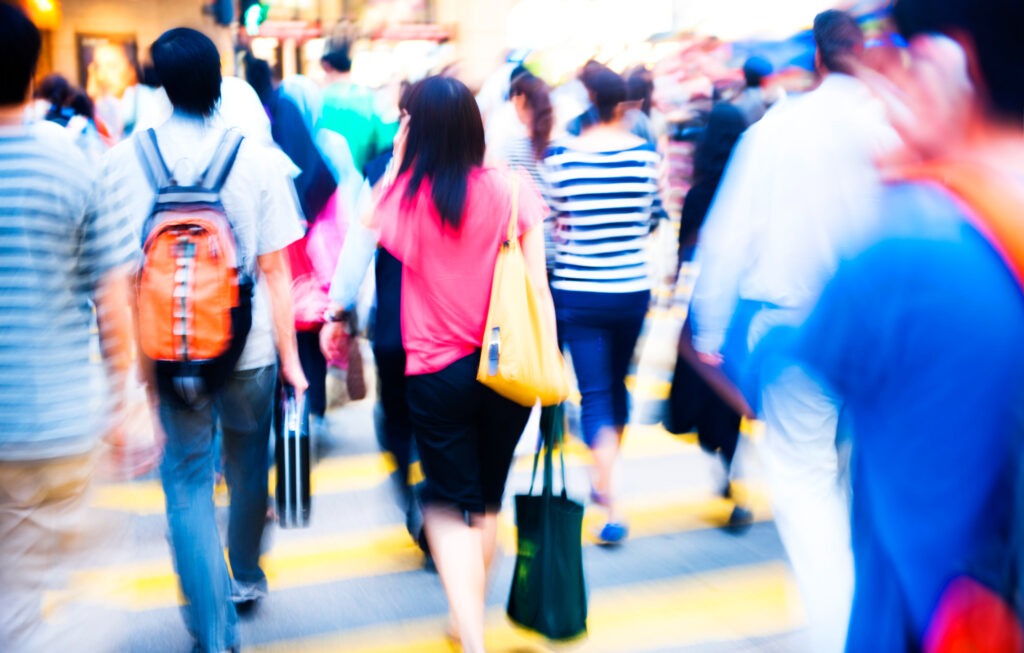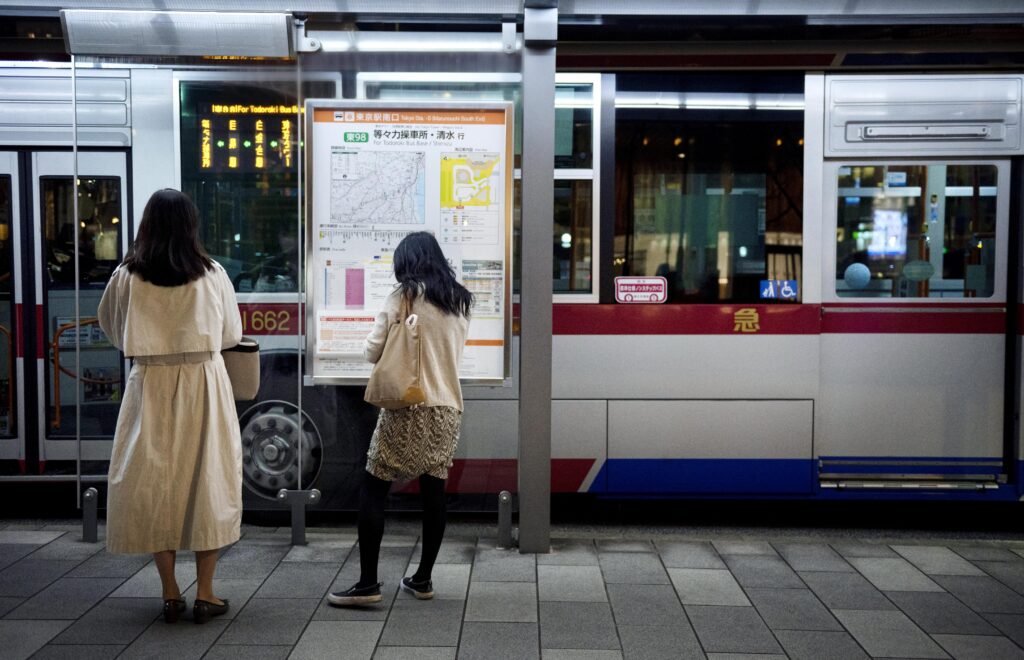26 October 2023 In Asia, Blog Post
Achieving a Better Future with Gender-Inclusive Transport and Mobility
By Kalpana Viswanath, Co-founder and CEO, Safetipin
Women occupy urban spaces and use transport systems in ways that are very different from men. This gendered experience is shaped by mainly two factors – women’s role as caregivers and safety concerns. Many transport systems in Asia have historically been designed for able-bodied men who work outside the home the whole day, without catering to the specific needs of women, children, elderly and differently-abled persons. As Asian cities bear the brunt of growing urban populations with 28 mega cities in the region, it is crucial that the way we move people is gender-inclusive and responsive to the needs of the underserved.
A report by the International Labour Organization (ILO) shows that in Asia and the Pacific, women do four times more unpaid care work than men and the lack of access to transport reduces women’s participation in the labour force by 16.5%.[1] Unpaid care work is the main barrier preventing women from getting into, remaining in, and progressing in the labour force. In 2018, 606 million working-age women said that they were not able to do so because of unpaid care work, such as dropping and picking up children, taking them to play, shopping for the family and looking after older family members.[2] Care work does not only happen within the home and these trips are not traditionally part of transport planning.

Unfortunately, the model of urban and transport planning that most Asian cities have adopted is a car-centric model. This does not resolve the problem that for many households, women do not own or have regular access to vehicles (cars and two- and three-wheelers); they feel unsafe in public transport and yet travel more than men in off-peak hours[1]. Transport planners need to design transport systems to reflect this reality.
Gender-inclusive transport can change the social, economic and cultural fabric of a city as more women, children and other vulnerable groups have access to safe, affordable and efficient public transport systems.
Providing affordable transport services and infrastructure can significantly improve women’s access to opportunities for education, employment and social leisure. Travel surveys show that women are more likely to walk and use public transport than men in cities across the world.[2] Women and families are reluctant to spend money on transport especially if it is not for economic activity. If a family owns a car or scooter, it is most likely that men would get first access to use it. For example, in Karnataka, India, the government has introduced subsidised or free transport for women;[3] other initiatives have worked with local governments to offer women-only transport services or reserved places for women on buses and trains.[4] While these are not long-term solutions, they facilitate women’s access to opportunities in the short term.
Ensuring better and safe access to public and informal transport services is key. Intermodal systems with well-connected bus, metro and rail routes that reach across the city, including the peripheries, can make a huge impact on women’s lives. Most Asian cities have a thriving informal or popular transport system that exists alongside the formal system which is especially integral for low-income neighbourhoods.[5] Cost, safety, and time determine how women move and access the transport system. Often these are better fulfilled by informal transport systems that tend to be cheaper, more flexible and available for shorter trips. However, safety continues to be a big concern especially as redressal mechanisms are often missing in informal systems. Reliable information about the availability and timings of these informal modes is seldom available, preventing girls and women from using public transport especially if they are travelling alone or during off peak hours. It is therefore to the benefit of women for city authorities to provide support to informal systems to make them more robust, safer and linked to the formal system.
Moreover, collecting gender disaggregated mobility data is an important step to understand the specific challenges faced by women in their everyday commute. This helps to inform planners to implement safety measures at waiting places, such as good lighting, seating, and walkable sidewalks, in order to mitigate the risks of violence and sexual harassment while riding and waiting for public transport. Installing emergency buttons inside transport systems to connect women to the police is also key to prevent violence if an incident is dealt with by the police in a timely and effective manner.

Another key area to address is mainstreaming women’s participation in the transport sector. Many steps need to be taken to incentivise opportunities for leadership and entrepreneurship. Initiatives such as regular gender sensitisation training of all public transport staff and provision of supporting infrastructure such as separate public toilets, lactation booths and creches for children at transport hubs could encourage women to join the transport sector.
Addressing gender responsiveness of transport and mobility systems will have an impact on many Sustainable Development Goals (SDGs) of the United Nations 2030 Agenda, including SDG 5 (Gender Equality), SDG 8 (Decent Work and Economic Growth), SDG 11 (Sustainable Cities and Communities) and SDG 13 (Climate Action). As city leaders address these global challenges, they need to keep in mind that cities are after all places to work, play, mingle, and enjoy rights. Nearly half of the world’s population is women.[1] Transport and mobility systems, as the bloodline of our daily lives, should help safeguard their social equity and dignity.
[1] International Labour Organization (2017), “ILO: Women do 4 times more unpaid care work than men in Asia and the Pacific”,, accessed 11 October 2023.
[2] Ibid.
[3] ITDP and Safetipin (2017), “Women and Transport in Indian Cities” (2017),, accessed 19 October 2023;
ADB, ‘Women Need a Greater Role in Designing Transport Systems in Asia’(2022), accessed 19 October 2023.
[4] Asian Development Bank (2022), “Women Need a Greater Role in Designing Transport Systems in Asia”, accessed 23 October 2023.
UNESCAP (2022), “Meeting urban mobility needs through paratransit and informal transport in Asia-Pacific cities”, accessed 23 October 2023.
[5] The Guardian (2023), “Ticket to freedom: free bus rides for women spark joy for millions in Karnataka”, accessed 23 October 2023.
[6] Women’s Media Center (2023), “Women-Only Cab Services in India Offer Safe Option for Women Travelers”, accessed 23 October 2023.
[7] These would include vans, mini-buses, angkots, tuk-tuks, jeepneys, samlors, passenger motorcycles, rickshaws, among others.
[8] Statistics Times (2021), “Gender ratio in the World”,, accessed 11 October 2023.

Kalpana Viswanath
Kalpana heads Safetipin and is involved in designing projects and creating partnerships, both government and civil society. She also represents the organisation at many international forums. She writes regularly and has a weekly column in Hindustan Times on urban issues. She has worked on issues of gender and urbanisation for over 20 years with several organisations including UN Women, UN Habitat and Jagori among others, has led large global projects and provided technical support on women’s safety to several cities. She is a member of the Advisory Group on Gender Issues at UN Habitat, Chairperson of Jagori and a Board member of the International Centre for the Prevention of Crime. She was part of the committee that prepared a report on Women’s Safety in Delhi for the city government.